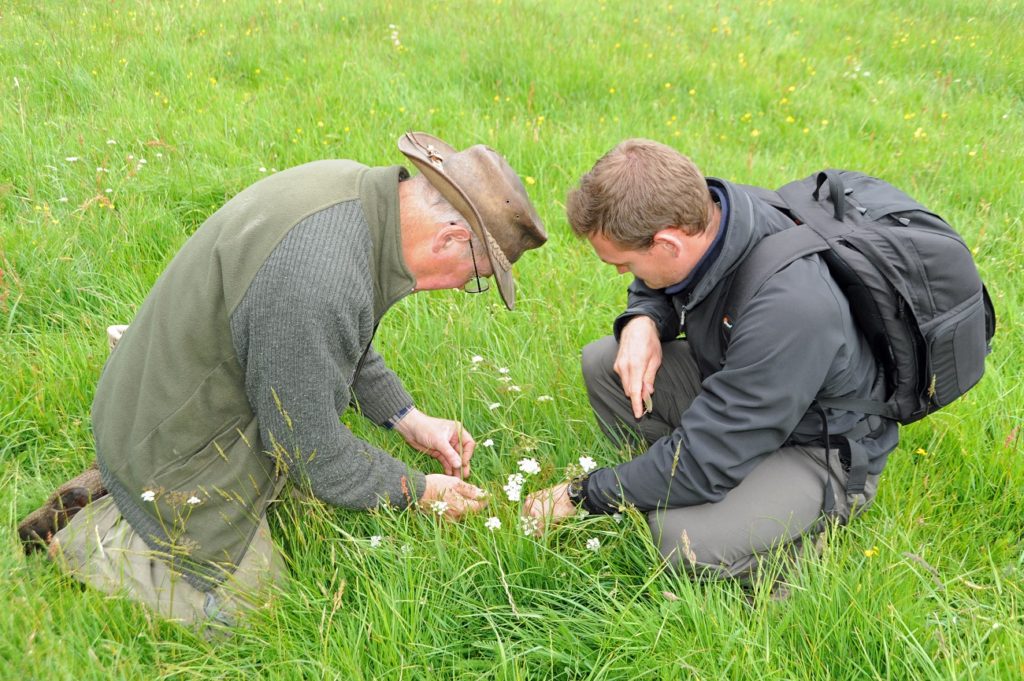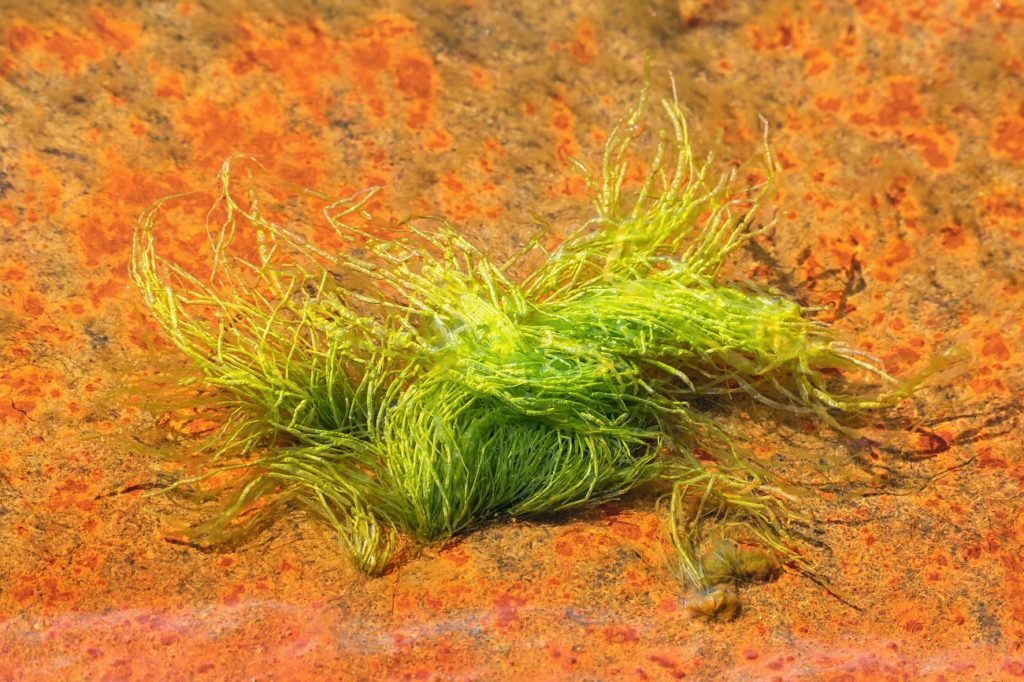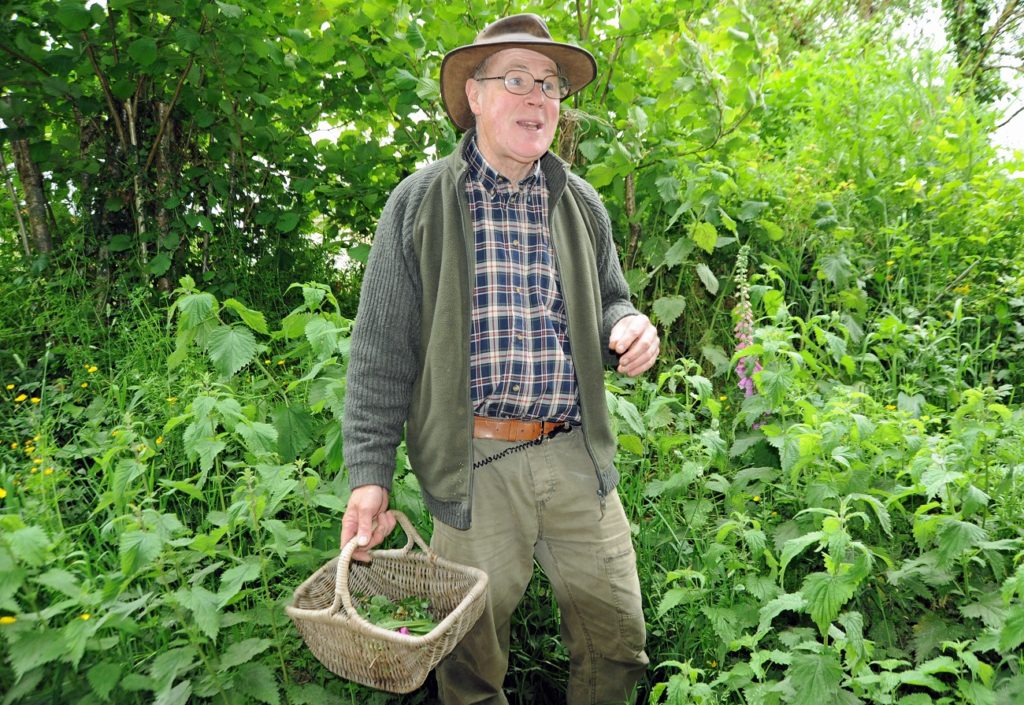I gave up growing my own fruit and vegetables years ago. Although it was fun and ultimately rewarding it was also unreliable and rather hard work. But my main objection to gardening is that it all takes too long. For me, instant gratification is everything. With gardening one needs to prepare the ground, sow the seed, weed, water and worry, and one day, all being well (and sometimes it isn’t) you pick.
Foraging, however, is quite a different matter – you just pick. My foraging career began over 30 years ago when I moved to Dorset (in my village I am described as a ‘relative newcomer’). An early passion for wild fungi found full expression in the fields and woods around the farmhouse I rented.
‘Top field’ would keep me for hours picking field mushrooms – 120 pounds one year – and ‘eight-acre field’ would supply a magnificently large form of the delicious shaggy parasol. St George’s mushrooms in spring, puffballs in summer, field blewits and the riotously colourful wax caps in autumn, and jelly ears and velvet shanks in winter would fill my mushrooming year.

Of course everyone thought I was mad and sure to poison myself. But, mad or not, I am also extremely careful and never, ever eat anything unless I am sure of its name. My best advice to anyone embarking on a mushroom hunt is to do the same. Get a couple (you really need at least two), of field guides and study them carefully.
Collect just a few different species at first – no more than one or two specimens of each in case you have picked something rare – and carefully identify them by examining all their characteristics and using the advice in your books. Never jump to conclusions but always match all of the characteristics of your find to the description given. If the book says a species should have a ring on the stem or turns yellow when bruised it really means it – if any characteristic is missing then it must be something else and maybe a deadly something at that.
Springing up like mushrooms
Identifying fungi is quite a tricky business but once you have a few species committed to memory you are set for life – you do not need to become an expert mycological taxonomist. My magnificent seven edible fungi are easy to identify, common and delicious: the parasol, giant puffball, horse mushroom, jelly ear, cep, charcoal burner and the hedgehog mushroom.
If you only choose one then I suggest the last of these. It is the mushroom with everything – delicious, nutty texture, very common, never gets maggots and completely unmistakable. It grows in woodland, often in substantial rings, and has a ‘chamois leather’ cap with little spines hanging down underneath. Nothing else looks remotely like it, making it the safest of all the wild mushrooms.
It would be remiss of me not to warn you of the species that causes 99% of all poisonings. The yellow stainer looks almost exactly like the field mushroom except the edge of the cap and the base of the stem turn a remarkable chromium yellow when bruised. This fades to brown after about 15 minutes. If you eat a yellow stainer you will have to cancel all engagements for a day or two before recovering completely, sadder but wiser.
Farm foods
Of course there are times when mushrooms are not to be found and, caught by the foraging bug, I determined to explore other wild sources of food. My Dorset farm yielded the familiar blackberries and sloes but I wondered what else might be found and bought several guides to expand my repertoire.
Most edible wild plants are easy to recognise. Everyone knows, usually to his or her cost, what a stinging nettle looks like and no-one hesitates when deciding whether the nut they are looking at is a hazelnut or some deadly impostor. Wild plants are, generally, much safer than wild mushrooms. However, some very common and excellent species can be a little more challenging: fat hen, red goosefoot, sea beet and even cherry plums may have the novice forager sensibly consulting a field guide.
Incidentally, and I trust I am not putting you off the whole idea entirely, the most deadly of all plant and fungal toxins is found in a very common native plant. Its leaves look like that of flat-leaved parsley and it has substantial and tasty-looking roots. It is called hemlock waterdropwort, and a plateful will have you dead in three hours.
Seaweed (and not the Chinese-takeaway kind)
While most people will have picked wild plants at sometime or other, even if it is just blackberries, and mushroom hunting has become quite fashionable, few venture on to our rocky shores to collect that least likely addition to a dinner party – seaweed.
When I started investigating seaweeds it was not with any expectation that I would actually enjoy eating any of them – their appearance, not to mention their smell, does not encourage the gourmet; and the evangelical zeal expressed in the few books I had on the subject I rejected as the misguided rantings of eccentrics. Well, I seem to have taken up ranting myself and proclaim the virtues of seaweed at every opportunity.

Seaweeds are eaten the world over, with Japan being the most accepting of this unusual food. The main problem for the British, apart from a disinclination to eat anything that doesn’t come in a packet, is that they just do not know how to cook it. With one exception there is no point collecting a basket of seaweed and trying to cook it like, say, cabbage – you end up with a smelly, slimy mess.
Most of the half-dozen or so good, edible seaweeds found around these islands require special treatment. Laver – a membranous, brown seaweed found, mostly, attached to rocks – must be boiled for ten hours (no less!) to form the sticky paste that is laverbread. This is used, notably in south Wales, to make oatmeal cakes or as a (rather sticky) sauce for lamb. The slightly fishy flavour is of the ‘umami’ kind found in other delights such as Marmite and Parmesan cheese. Laver, put through a paper-making process, will be familiar to many as ‘nori’, the stuff that little bits of fish and rice are wrapped in to make sushi.
With carragheen – a small, bushy seaweed found attached to rocks or in rock pools at low tide – you do not eat the seaweed at all; it is simply boiled for half an hour to extract the incredibly slippery/slimy substance called ‘carragheenan’ that is used to set such things as panna cotta.

Gutweed – a bright green, hairlike seaweed of upper shores – can be deep fried to form genuine (the stuff you get in Chinese restaurants is actually cabbage) crispy seaweed. Sugar kelp is dried and fried to make seaweed crisps and the other kelps are used for their flavour-enhancing glutamates and removed from the dish prior to serving. The exception I mentioned earlier is dulse. The deep red, flat, fingered fronds can be cooked like any other vegetable and make an excellent ‘seaweed bubble and squeak’. I do recommend you give seaweed a try. So much of it is wasted for want of knowledge and courage.
Food collected from the wild is, of course, free and I hope I have been able to convince you that it is also delicious. But collecting wild food can feed the soul as well as the body. The forager comes to truly appreciate food. Food from the supermarket is just a commodity, the origin of which we neither know nor care. When you eat food you have gathered yourself you understand it in a way not open to others. You know where it came from, how it lived, what problems it faced, how fresh it is and how jolly hard it may have been to come by in the first place. So, I entreat you, go foraging – it will be good for your karma.
More information
John is the founder of Edible Bush, and runs foraging courses around Dorset. Discover more about Dorset’s wild food in our guide: